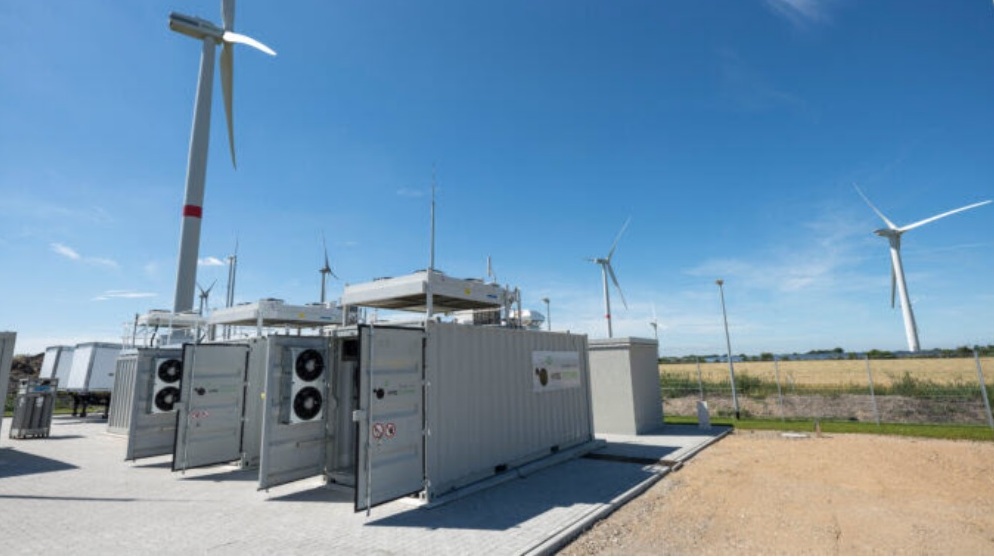
India’s National Hydrogen Mission (NHM) is a very significant step and can sow the seeds of the country’s eventual energy-independence, notes Ashwini Kumar.
India has truly emerged as a dominant global economy in the past 74 years of its independence. India has become a prominent leader in foreign relations, a peacemaker, and most importantly, an environmentally-conscious society.
India was one of the first countries in the world to provide judicial remedies to victims of environmental damage through a unique legal framework under the National Green Tribunal Act, 2010. India’s per capita CO2 emissions is far below the emissions of most of the G-20 nations and yet, India is equally, if not more, determined as the rest of the G-20 nations to reduce its emissions even further.
Taking these efforts forward to reduce the country’s carbon footprint, Prime Minister Narendra Modi, during his speech from the ramparts of the Red Fort, announced the launch of India’s National Hydrogen Mission (NHM) and committed to making India a global hub for green hydrogen production and exports.
Green hydrogen can help India achieve self-reliance in energy, as well as a motivating factor for a global clean energy transition.
 Calling the adoption of the hydrogen ecosystem as a quantum jump in India’s climate focused actions Modi also said that green hydrogen will help India achieve self-reliance in its energy demand and will become the motivating factor for a global clean energy transition. On the path of growth in a green economy, India will see immense opportunities in green jobs which will accelerate the start-up ecosystem across the country and encourage the nation’s youth to embark on a journey not only to fight climate change, but also strengthen India’s manufacturing sector.
Calling the adoption of the hydrogen ecosystem as a quantum jump in India’s climate focused actions Modi also said that green hydrogen will help India achieve self-reliance in its energy demand and will become the motivating factor for a global clean energy transition. On the path of growth in a green economy, India will see immense opportunities in green jobs which will accelerate the start-up ecosystem across the country and encourage the nation’s youth to embark on a journey not only to fight climate change, but also strengthen India’s manufacturing sector.
As a start, the government has proposed an $8-billion scheme for incentivizing manufacturing of electric vehicles, both battery electric and hydrogen fuel cell electric, for domestic use and for exports. Under the NHM, the government has proposed a green hydrogen procurement mandate for industries like fertilizer, steel, and refining, and such measures will create a strong demand for green hydrogen in India.
The NHM also explores the use of hydrogen in energy storage, reducing intermittency in renewable power generation, and using hydrogen in the northeastern states where availability of cheap hydropower remains underutilized due to low grid connectivity. Hydrogen can also address major power transmission & distribution challenges for renewable power generated in remote areas in India, like Rajasthan and Ladakh, where building a grid infrastructure will be challenging, both financially and ecologically.
India’s corporate sector has already come forward to take charge of what could be a hydrogen-driven economy for the country.
The call from the Red Fort to make India aatmanirbhar in energy using green hydrogen is not only a government policy or agenda, but India’s industry has already come forward to take charge to lead the hydrogen driven economy in India.
Indian Oil, NTPC, Indian Railways, and several other public sector units have already taken bold steps forward to bring in the hydrogen era. While Indian Oil is set to establish the country’s first green hydrogen production unit at Mathura, NTPC is set to usher in the country’s first green hydrogen mobility by running fuel cell electric buses between New Delhi and Leh, Ladakh. Not far behind is the Indian Railways which has floated a tender to procure fuel cell locomotives to ply on its network.
 Private sector companies in India are not just standing spectators to the government’s drive in the hydrogen sector, Reliance Industries and the Tata Group have both made announcements in developing the hydrogen ecosystem. Reliance Industries unveiled an Rs.75,000 crore investment plan over a three-year period to manufacture electrolysers, fuel cells, and other clean energy initiatives and the Tata Group is manufacturing the fuel cell electric buses required by the PSUs for their green hydrogen projects. Reliance Industries along with US-based Chart Industries has formed an alliance for the promotion of hydrogen in India, the India Hydrogen Alliance, where JSW Steel, National Chemical Laboratories, etc. are leading workgroups on different verticals within the hydrogen ecosystem.
Private sector companies in India are not just standing spectators to the government’s drive in the hydrogen sector, Reliance Industries and the Tata Group have both made announcements in developing the hydrogen ecosystem. Reliance Industries unveiled an Rs.75,000 crore investment plan over a three-year period to manufacture electrolysers, fuel cells, and other clean energy initiatives and the Tata Group is manufacturing the fuel cell electric buses required by the PSUs for their green hydrogen projects. Reliance Industries along with US-based Chart Industries has formed an alliance for the promotion of hydrogen in India, the India Hydrogen Alliance, where JSW Steel, National Chemical Laboratories, etc. are leading workgroups on different verticals within the hydrogen ecosystem.
JSW Energy has collaborated with an Australian company to produce green hydrogen in India. NCL, along with an Indian technological company, has developed the first indigenously developed fuel cell stack for vehicular use. Even though the current mix of projects around hydrogen in India is developing at a fast pace, most of these projects are on a pilot basis and large-scale applications are yet to materialize. The Adani Group is looking at a large-scale green hydrogen production facility and Reliance Industries has announced the development of the world’s largest integrated renewable energy manufacturing facility at Jamnagar for making fuel cells and electrolysers.
The government is also looking at using hydrogen by mixing it with natural gas or using it to produce methanol.
At the same time the government is also looking at using hydrogen by mixing it with natural gas and using hydrogen for manufacturing methanol and other alternative fuels to increase use of low-emission fuels and to reduce its import dependence for energy. These projects will be supported by the National Hydrogen Mission and by other schemes of the government such as the production-linked incentive (PLI) and FAME India schemes.
Unlike the import-intensive lithium ion technology, most raw materials for hydrogen technology are easily available.
Green Hydrogen production envisaged under the NHM is significant in reducing the overall energy import dependence. Unlike lithium-ion technology where India will have to substantially depend on importing raw materials from just a few countries, in contrast, in the hydrogen technology, most raw materials required are easily available both in India and across several countries around the world. Sameer Gupta, CMD, Jakson Group, has said “hydrogen is the only fuel which will help [India] move towards being energy independent” as reported by the Fuel Cell India magazine.
The significance of an announcement by the government is always high, but a call to usher in a green hydrogen economy from the Red Fort is extraordinary. It brings back memories from 2014, when the Prime Minister had called from the Red Fort for public participation for a Swachh Bharat Mission. The Clean India Mission eventually snowballed to becoming the world’s largest sanitation program. Similarly, India’s Start-Up program, Skill India initiative, and the Ayushman Bharat health insurance schemes were all announced from the ramparts of the Red Fort. If the government backs up the Prime Minister’s call for a hydrogen mission leading to an aatmanirbhar Bharat, India will certainly become energy independent in the future.
(About the author: Ashwini Kumar is a green hydrogen expert)


